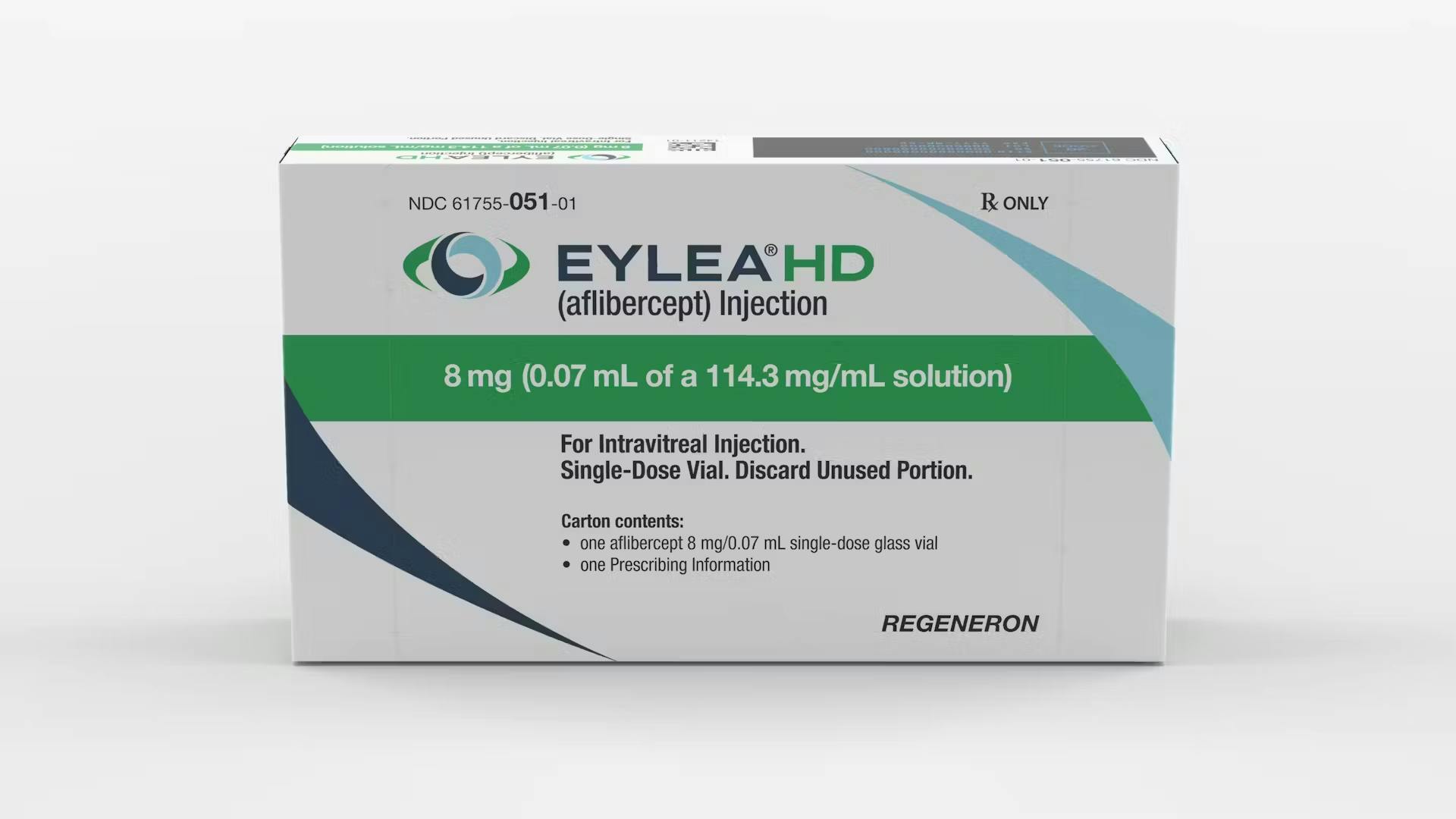Clinical Outcomes in nAMD with Aflibercept 8 mg in the Phase 2 CANDELA Study
– Study Overview:
– Phase 2, open-label, 44-week CANDELA trial evaluating aflibercept 8 mg vs aflibercept 2 mg in treatment-naive neovascular age-related macular degeneration (nAMD).
– Objective: Assess anatomic (fluid resolution) and visual (BCVA) outcomes to explore therapeutic benefits of higher-dose aflibercept.
– Post hoc analysis: Expands on primary findings by evaluating total retinal fluid (intraretinal fluid [IRF], subretinal fluid [SRF], sub-retinal pigment epithelium [sub-RPE] fluid) and quartile analysis of central subfield thickness (CST) changes.
– Study Population:
– Patients with treatment-naive nAMD; exact sample size not specified in text but included 95 eyes for CST quartile analysis at week 44.
– Baseline characteristics (Table S1):
– Mean choroidal neovascularization (CNV) area and lesion size increased from quartile 1 (Q1) to Q4.
– Mean BCVA decreased from Q1 to Q4 (worse vision with thicker retinas).
– Mean CST comparable in Q1–Q3; in Q4, lower in 8-mg (702.2 µm) vs 2-mg (788.2 µm) group.
– Interventions:
– Randomization:
– Aflibercept 8 mg: 3 monthly doses (weeks 0, 4, 8), then weeks 20 and 32, with pro re nata (PRN) dosing at weeks 16, 24, 28, 36, 40 per protocol.
– Aflibercept 2 mg: Same schedule.
– Rationale: Higher dose aims for extended duration and enhanced fluid control, building on pivotal trials (e.g., PULSAR, PHOTON).
– Key Findings:
– Primary endpoint (previously reported):
– Absence of IRF/SRF in central subfield at week 16: 51% (8 mg) vs 34% (2 mg).
– Post hoc anatomic outcomes:
– Absence of IRF, SRF, and sub-RPE fluid in central subfield:
– Week 16: 38% (8 mg) vs 19% (2 mg); difference 18.9% (95% CI, 2.1–35.6%).
– Week 44: 25% (8 mg) vs 11% (2 mg); difference 13.2% (95% CI, -1.2 to 27.6%).
– Trend: Consistent benefit of 8 mg at all visits (weeks 16–44), suggesting enhanced drying effect.
– CST quartile analysis (week 44, 95 eyes):
– Q1 (≤65 µm reduction or increase): 18% (8 mg) vs 33% (2 mg), indicating less worsening/smaller reductions with 8 mg.
– Q2 (66–144 µm reduction): 22% (8 mg) vs 28% (2 mg).
– Q3 (145–239 µm reduction): 33% (8 mg) vs 20% (2 mg).
– Q4 (>239 µm reduction): 27% (8 mg) vs 20% (2 mg).
– Implication: Despite lower baseline CST in 8-mg Q4, more eyes achieved large CST reductions (>239 µm), suggesting greater efficacy in thicker retinas.
– Post hoc visual outcomes (week 44):
– BCVA change:
– No change/≥1-letter loss: 20% (8 mg) vs 27% (2 mg).
– 1–7 letter gain: Similar between groups.
– 8–14 letter gain: 33% (8 mg) vs 22% (2 mg).
– ≥15 letter gain: 33% (8 mg) vs 14% (2 mg).
– BCVA thresholds:
– ≥20/40 (≥69 ETDRS letters): 61% (8 mg) vs 49% (2 mg).
– ≥20/20 (≥84 ETDRS letters): 10% (8 mg) vs 2% (2 mg).
– Baseline BCVA <20/40:
– ≥10-letter gain: 65% (8 mg) vs 44% (2 mg).
– ≥15-letter gain: 43% (8 mg) vs 18% (2 mg).
– Implication: Aflibercept 8 mg associated with greater visual gains and clinically meaningful BCVA (e.g., ≥20/40, driving vision).
– Clinical Implications:
– Aflibercept 8 mg offers superior fluid control (IRF, SRF, sub-RPE) as early as week 16, sustained through week 44, critical for reducing nAMD activity.
– Visual benefits: Higher proportion achieving ≥15-letter gains and ≥20/40 BCVA, especially in eyes with poorer baseline vision (<20/40), supporting use in severe cases.
– Sub-RPE fluid: Often underreported, but its resolution with 8 mg highlights comprehensive exudative control, relevant for monitoring disease activity.
– Adoption: Findings support aflibercept 8 mg for nAMD, potentially reducing treatment burden with extended intervals (aligned with PULSAR’s 12–16-week dosing).
– Counseling: Emphasize improved vision and retinal drying with 8 mg, particularly for patients with thicker retinas or significant fluid.
– Pathophysiology Context:
– nAMD: Driven by VEGF-mediated CNV, causing IRF, SRF, and sub-RPE fluid, leading to vision loss if untreated.
– Aflibercept: VEGF inhibitor; 8 mg dose increases binding capacity and duration, enhancing fluid resolution and visual outcomes.
– Sub-RPE fluid: Early marker of neovascular activity, per studies (e.g., Padnick-Silver, Schmidt-Erfurth), making its reduction a key therapeutic goal.
– Comparison to Prior Studies:
– CANDELA primary results (Wykoff et al., JAMA Ophthalmol 2023):
– Confirmed 51% vs 34% fluid-free (IRF/SRF) at week 16; post hoc adds sub-RPE fluid resolution.
– PULSAR (phase 3):
– Aflibercept 8 mg noninferior to 2 mg at 48 weeks, with greater CST reduction and fluid resolution 8 weeks post-loading (post hoc).
– Supports CANDELA’s findings of anatomic superiority with 8 mg.
– PHOTON: Aflibercept 8 mg in diabetic macular edema showed similar durability and efficacy, reinforcing high-dose benefits across VEGF-driven diseases.
– Literature: Sub-RPE fluid as a biomarker (Hanson et al., Eye 2023) aligns with CANDELA’s focus on comprehensive fluid control.
– Strengths:
– First post hoc analysis evaluating sub-RPE fluid with aflibercept 8 mg, addressing a gap in nAMD trials.
– Quartile analysis: Highlights differential efficacy in thicker retinas, guiding patient selection.
– Clinical relevance: Outcomes (e.g., ≥20/40 BCVA, ≥15-letter gains) align with real-world goals (e.g., driving, reading).
– Consistency: Aligns with phase 3 PULSAR data, strengthening evidence for 8 mg.
– Limitations:
– Post hoc nature: Hypothesis-generating, not pre-specified, risking bias.
– Open-label design: Lacks masking, potentially influencing investigator decisions.
– Non-standardized retreatment: Week 16 PRN criteria varied, limiting comparability of dosing effects.
– Small sample: 95 eyes for CST analysis; exact total cohort size unclear, reducing statistical power.
– Short duration: 44 weeks insufficient for long-term outcomes (e.g., atrophy, CNV recurrence).
These points emphasize aflibercept 8 mg’s superiority in fluid resolution (IRF, SRF, sub-RPE) and visual gains, especially in severe nAMD, with sub-RPE fluid as a novel focus.
